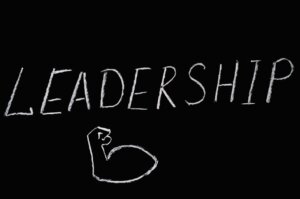Every trainer and facilitator has his/her favorite team building activity. Some facilitators like the more active interventions such as rope courses; others prefer the more “touchy-feely” ones like trust walks; still others like using blind-folded instruction, or simulations like Gold of the Desert Kings.
Of course the most appropriate team building activity for a group depends on a number of factors, including your overall purpose, the nature of the group, the amount of time you have, the limitations of the space, etc.
Yet, of all the team building activities I have experienced, my favorite by far is an activity called Crossing the River. I’ll describe the exercise first and then I’ll tell you why I think it is so great.
| Objective | Have all members of the team cross the river at the same time. |
| Preparation | Create three islands by taping together four 8.5 x 11 sheets of paper for each island. Create a pebble for each person by cutting sheets of paper in half length-wise to form 4.25 x11 sheets. Create one rock (an 8.5 x 11 sheet) for every six participants. Tape off an open area at least 10 medium strides (25-30 feet) long and six strides wide. Place the islands as shown in the diagram. |
| Instructions | Have all participants stand on the left side of the bank and hand out a copy of the instruction sheet to each person and review the situation and rules together. Then give two minutes for questions. The clock starts after the last question is answered.The Situation You and your teammates are on one bank of a poisonous, deadly river. The river is so contaminated that if any part of a person’s skin or clothing touches the river, they will die instantly! Each of the people on your team must cross from one bank of the deadly river to the other. You have 20 minutes. The Rules
|
| Execution | During execution, pay close attention to group dynamics. Some items to be conscious of in particular follow. Points for ObservationCommunication
Planning
Execution
|
| Debrief | At the completion of the exercise, debrief with the team. Have them identify their own observations. Be sure to offer your own observations as well. Following observations, have them identify their learnings, and how to apply their observations and learnings to the workplace. |
Crossing the River is ideal for 8-16 people. If you have up to 24, you can choose several to be observers and assign them different sections of the Points for Observation. If you have more than 24, you can split into multiple teams that do the exercise all at the same time, each with their separate “rivers” they have to cross. I have done this with 16 teams simultaneously in a very large room. As each team completed, they let out a team cheer.
What makes Crossing the River so great for team building?
- The goal requires team planning and execution; the team has to come together for success.
- No one can do it on his/her own; the team either succeeds or fails together.
- The exercise breaks down barriers; it requires people to share their thoughts, share their resources, and share their space.
- And perhaps most interestingly, the time limit creates a sense of urgency that frequently results in people defaulting to the same behaviors that do in the workplace: those who typically takeover, do so in this exercise; people who drop out, also do the same; people who frequently serve as naysayers, often take on this same role when faced with Crossing the River.
For years I have been looking for a second team building exercise as good as this one. If you have one I would love to hear from you.
—————————
For more resources, see the Library topic Facilitation.
__________________________
Michael Wilkinson is the CEO and Managing Director of Leadership Strategies, Inc., “The Facilitation Company” and author of the brand new “The Secrets of Facilitation 2nd Edition”, “The Secrets to Masterful Meetings”, and the brand new “The Executive Guide to Facilitating Strategy.” Leadership Strategies is a global leader in facilitation services, providing companies with dynamic professional facilitators who lead executive teams and task forces in areas like strategic planning, issue resolution, process improvement and others. They are also a leading provider of facilitation training in the United States.















